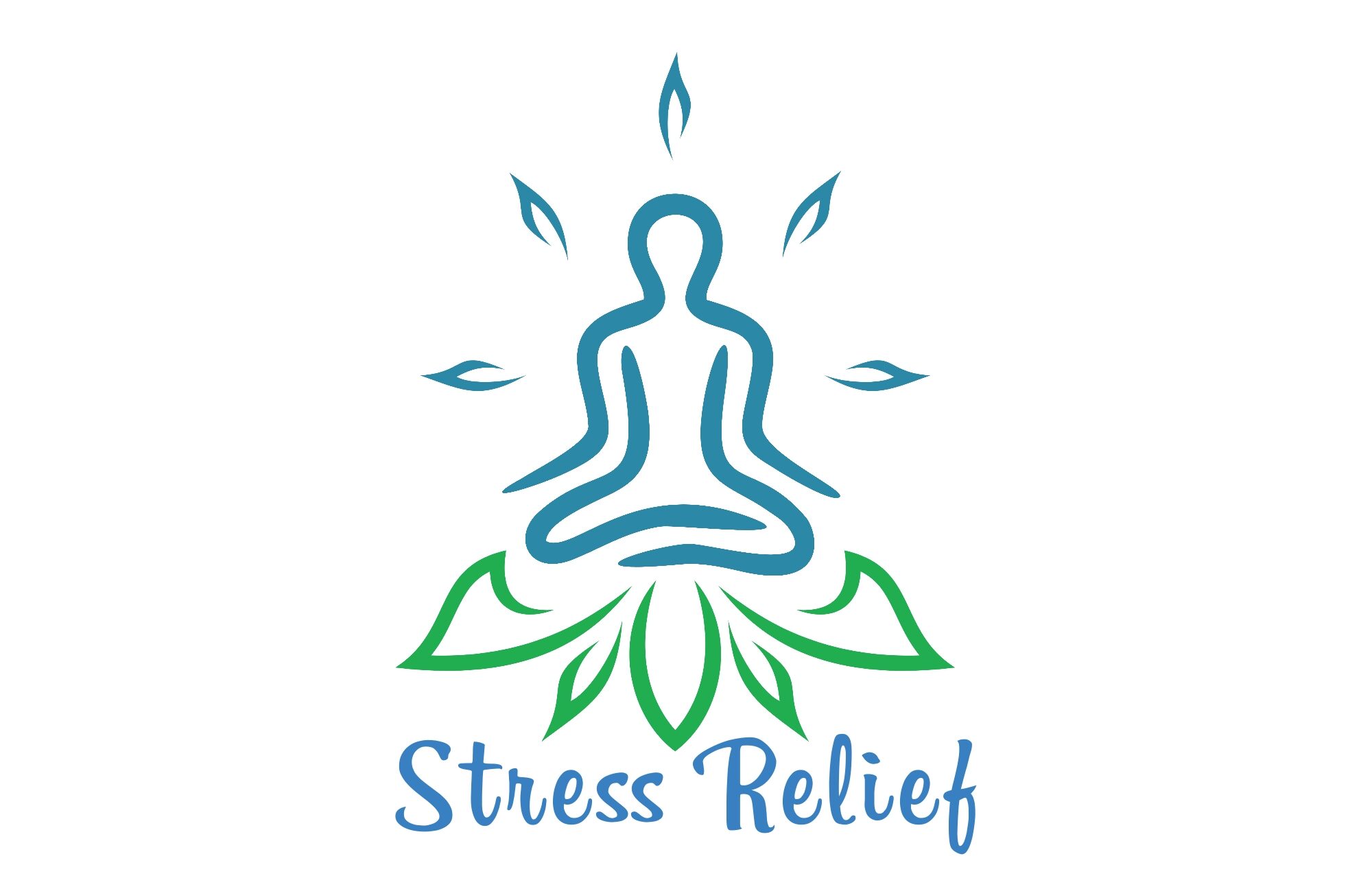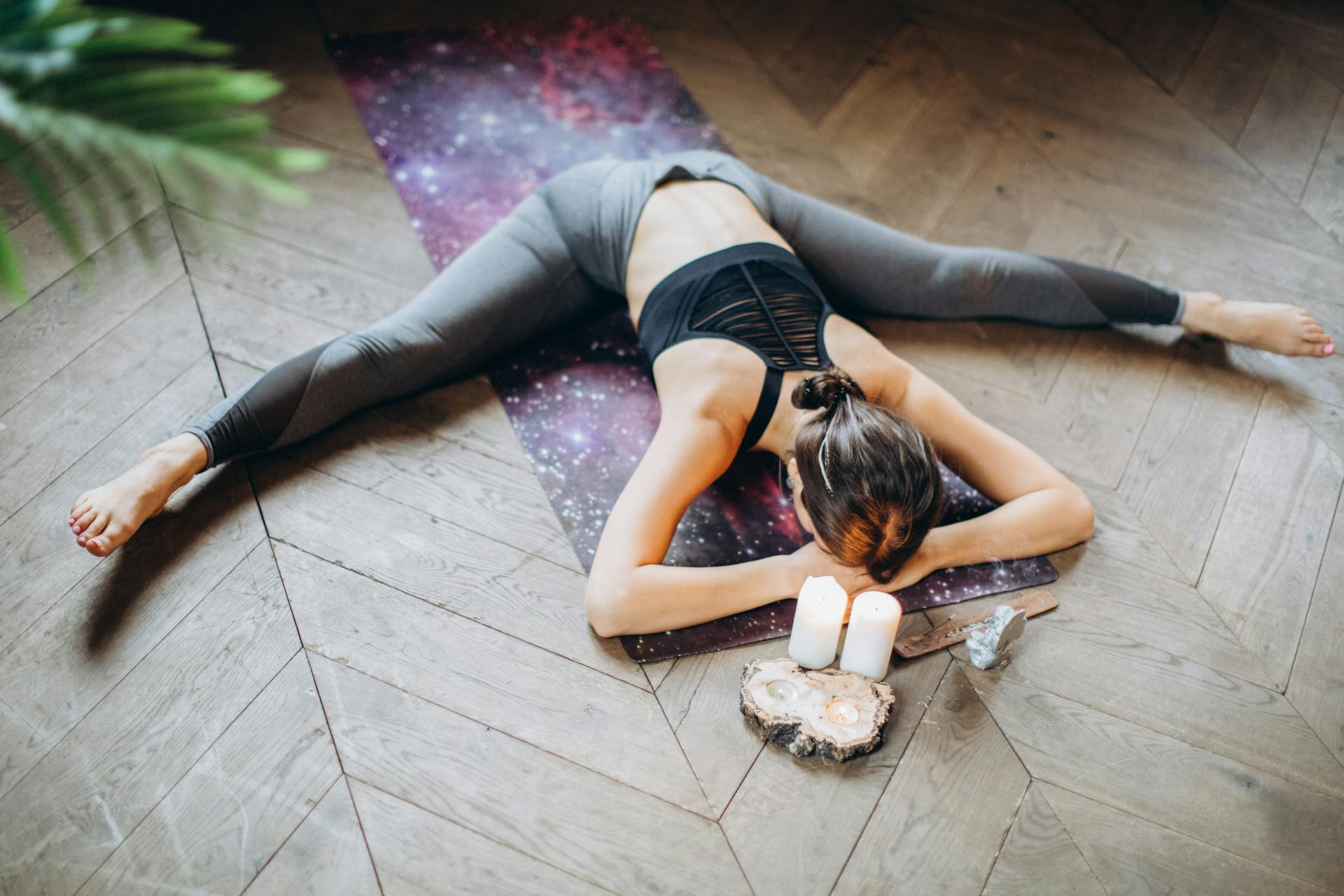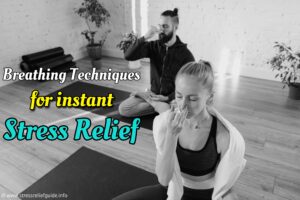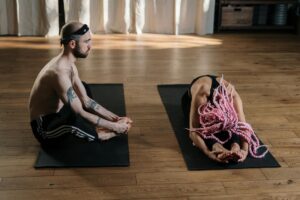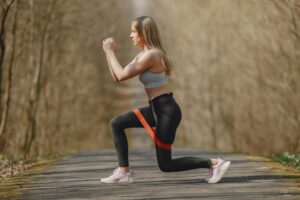I. Introduction
A. Understanding the Impact of Stress on Health
Stress is an unavoidable part of life and can have a profound impact on our overall well-being. From increased blood pressure to weakened immune function, chronic stress takes a toll on both our physical and mental health. It is crucial to find effective ways to manage and relieve stress in order to lead a balanced and fulfilling life. In this article we will learn the importance of aromatherapy and exercise for stress management.
B. Introducing Aromatherapy and Exercise For Stress Management
In the quest for stress relief, many turn to pharmaceutical solutions that come with a host of potential side effects. However, there are natural alternatives that can effectively alleviate stress without the unwanted repercussions. Aromatherapy and exercise are two powerful tools that have been recognized for their ability to reduce stress levels and promote relaxation.

C. Benefits of Combining Aromatherapy and Exercise
While aromatherapy and exercise yield individual benefits, their combined use can amplify their stress-busting effects. Aromatherapy enhances the mind-body connection and primes the body for exercise, while exercise releases endorphins that further promote a sense of well-being. Together, they offer a holistic approach to managing stress that goes beyond symptom relief.
II. The Science Behind Aromatherapy
A. What is Aromatherapy?
Aromatherapy is the practice of using essential oils derived from plants to promote physical and psychological well-being. These highly concentrated oils contain the aromatic compounds of the plants and can be utilized through inhalation, topical application, or ingestion (though ingestion should only be done under the guidance of a trained professional).
B. How Aromatherapy Affects the Brain and Body
- The Role of Essential Oils in Aromatherapy
Essential oils are the backbone of aromatherapy, and each oil has distinct therapeutic properties. For example, lavender is renowned for its calming effects, while peppermint promotes alertness and focus. These oils work through various mechanisms, including interacting with receptor sites in the brain and affecting neurotransmitter levels.

- The Impact of Scent on Emotions and Mood
The olfactory system, responsible for our sense of smell, is intricately connected to the limbic system, which controls emotions and memory. When we inhale essential oils, the scent molecules travel through the olfactory nerves and stimulate the limbic system, triggering emotional and physiological responses.
- The Connection between Aromatherapy and the Nervous System
Aromatherapy has a direct influence on the nervous system, specifically the autonomic nervous system. This system regulates many bodily functions, including heart rate, blood pressure, and digestion. Essential oils can either stimulate the parasympathetic branch, promoting relaxation, or activate the sympathetic branch, increasing alertness and energy.
III. The Role of Exercise in Stress Management
A. Exercise as a Stress-Busting Activity
Exercise has long been recognized as a powerful stress management tool. Engaging in physical activity helps release built-up tension, burn off excess cortisol (the stress hormone), and promote the production of endorphins, the body’s natural mood boosters.
B. Physical and Mental Health Benefits of Exercise
- The Release of Endorphins during Exercise
Endorphins are neurotransmitters that act as natural pain relievers and mood enhancers. When we exercise, endorphins are released in our brain, providing a euphoric feeling commonly known as the “runner’s high.” This surge of endorphins helps reduce anxiety, elevate mood, and combat the negative effects of stress.
- The Impact of Exercise on Cortisol Levels
Chronic stress often leads to consistently elevated levels of cortisol, which can have detrimental effects on our health. Regular exercise helps regulate cortisol levels, preventing them from reaching harmful levels. This hormone-balancing effect contributes to improved well-being and reduced stress levels.
- Improvement of Sleep Quality through Exercise
Stress often disrupts sleep, leading to a vicious cycle of fatigue and increased tension. Engaging in exercise, particularly in the earlier part of the day, enhances sleep quality by promoting a deeper and more restorative sleep. This quality sleep further aids in stress management by increasing resilience and overall energy levels.
IV. Aromatherapy Techniques for Stress Relief
A. Inhalation Methods for Aromatherapy
- Diffusers and Vaporizers
Diffusers and vaporizers are popular and effective ways to disperse essential oils into the air. These devices break down the essential oil particles into finer mist-like droplets that can be inhaled. Whether used at home or in a professional setting, diffusers provide a constant infusion of stress-relieving scents.
- Steam Inhalation
Steam inhalation involves adding a few drops of essential oil to a bowl of hot water and carefully inhaling the steam. This method is particularly effective for respiratory-related stress symptoms and can provide both physical and mental relief.

- Aromatic Sprays and Mists
Aromatic sprays and mists offer a convenient and refreshing way to enjoy the benefits of aromatherapy. These sprays can be easily misted onto the face, body, or surrounding environment to create an instant atmosphere of relaxation.
B. Topical Applications of Essential Oils
- Massage and Body Oils
Massage and body oils offer a therapeutic experience that combines the benefits of touch and aromatherapy. When essential oils are combined with a carrier oil and applied during massage, they penetrate the skin and provide a dual effect of relaxation and nourishment.
- Bath Bombs and Salts
Transforming your bath into a spa-like experience, bath bombs and salts infused with essential oils release fragrant aromas that envelop you. As you soak in the warm water, the essential oils enter through the skin and respiratory system, working their stress-relieving magic.
- Compresses and Balms
Compresses and balms are typically used for localized stress relief. By applying a warm or cold compress infused with essential oils to specific areas of tension, the soothing effects of the oils penetrate deeply, providing much-needed relief.
C. Creating Customized Aromatherapy Blends
- Understanding Essential Oil Combinations
Creating customized blends allows individuals to address specific stress-related symptoms or personal preferences. Different essential oils have synergistic effects when combined, amplifying their therapeutic potential. It is essential to research and understand the properties of each oil to create a well-balanced and effective blend.
- Safety Precautions and Dilution Guidelines
When working with essential oils, it is crucial to consider safety precautions and dilution guidelines to ensure proper usage. Essential oils are highly concentrated and should be diluted in carrier oils or other suitable mediums to prevent adverse reactions. Consulting a certified aromatherapist can provide valuable guidance in this process.

- Personalizing Aromatherapy for Stress Relief
The beauty of aromatherapy lies in its personalization. Each individual responds differently to various scents and techniques. Experimenting with different oils, methods of application, and dosages can help tailor aromatherapy practices to optimize stress relief and overall well-being.
V. Incorporating Exercise and Aromatherapy in Daily Routine
A. Pre-Exercise Aromatherapy Rituals
- Using Essential Oils to Enhance Focus and Energy
Incorporating energizing essential oils, such as citrus or peppermint, before exercise can help boost focus and motivation. Diffusing or applying these oils topically can awaken the senses and prepare the mind and body for the upcoming workout.
- Warming Up the Muscles with Aromatic Stretches
Combining aromatherapy with stretching exercises creates a sensory experience that awakens both the body and mind. Applying a soothing essential oil, such as lavender or eucalyptus, before stretching helps relax the muscles and promotes a deeper level of flexibility.
- Preparing a Calming Post-Workout Routine
After an intense workout, it is essential to wind down and calm the body and mind. Utilizing relaxing essential oils, such as chamomile or sandalwood, during post-workout routines like gentle stretching or meditation can aid in relaxation and muscle recovery.
B. Combining Aromatherapy with Different Exercise Modalities
- Aromatherapy in Yoga and Meditation Practices
Yoga and meditation are well-known stress management techniques. Adding aromatherapy amplifies the effects of these practices by grounding the mind and deepening the relaxation experience. Employing soothing scents, like frankincense or lavender, during yoga or meditation can enhance the overall sense of well-being.
- Elevating Cardiovascular Workouts with Aromatherapy
Cardiovascular workouts, such as running or cycling, can be invigorating but also mentally and physically demanding. Incorporating stimulating essential oils, like rosemary or grapefruit, during these activities can provide an extra boost of energy and motivation.

- Unwinding with Aromatherapy during Relaxation Exercises
During relaxation exercises, such as tai chi or gentle stretching, the focus is on calming the mind and body. Utilizing calming scents, such as neroli or bergamot, during these exercises promotes a state of tranquility and aids in stress reduction.
C. Post-Exercise Recovery and Relaxation with Aromatherapy
- Incorporating Soothing Essential Oils in Cool-Down Activities
After an intense workout, the body needs time to cool down and recover. Applying essential oils known for their soothing properties, such as peppermint or lavender, during cool-down activities like stretching or foam rolling can aid in muscle relaxation and recovery.
- Utilizing Aromatherapy to Encourage Restful Sleep after Exercise
Exercise can enhance sleep quality, but incorporating sleep-promoting essential oils, such as chamomile or cedarwood, can further facilitate a restful night’s sleep. Applying these oils through aromatherapy methods before bed can signal the body to shift into a deep state of relaxation and preparation for sleep.
- The Role of Aromatherapy in Minimizing Exercise-Induced Muscle Soreness
Muscle soreness is a common consequence of intense exercise. Utilizing essential oils known for their anti-inflammatory and analgesic properties, such as ginger or helichrysum, can help alleviate discomfort and promote the speedy recovery of fatigued muscles.
VI. Summary
A. The Synergy of Aromatherapy and Exercise in Stress Management
By combining the power of aromatherapy and exercise, individuals can unlock a potent stress management toolset. Aromatherapy offers immediate relaxation and mood-enhancing benefits, while exercise releases endorphins and promotes overall physical and mental well-being.
B. Key Takeaways on the Benefits and Techniques Discussed
- Aromatherapy utilizes essential oils to promote stress relief and emotional well-being.
- Exercise releases endorphins, improves sleep quality, and regulates cortisol levels.
- Inhalation methods, topical applications, and customized blends are key aromatherapy techniques.
- Pre-exercise rituals, incorporating aromatherapy in different exercises, and post-exercise recovery activities are strategies for combining aromatherapy and exercise.
C. Encouragement to Incorporate Aromatherapy and Exercise for Stress Relief
Incorporating aromatherapy and exercise into daily routines can dramatically improve stress management. By prioritizing self-care and embracing these natural techniques, individuals can create a balanced and fulfilling lifestyle.
VII. Frequently Asked Questions (FAQs)
A. Can anyone use aromatherapy and exercise for stress management?
Yes, aromatherapy and exercise can be utilized by individuals of various ages and fitness levels. However, it is essential to consult medical professionals or certified aromatherapists if there are underlying health concerns.
B. Are there any potential risks or side effects associated with aromatherapy and exercise?
While aromatherapy and exercise are generally safe for most individuals, certain precautions should be taken. For example, some essential oils may cause skin irritation if not properly diluted. Additionally, individuals with specific medical conditions should seek professional advice before beginning any exercise or aromatherapy regimen.
C. How long does it take to experience the positive effects of combining aromatherapy and exercise for stress relief?
The timeline for experiencing the positive effects varies from person to person. Some individuals may notice immediate improvements, while others may require a few weeks of consistent practice to witness significant changes.
D. Can aromatherapy and exercise help with chronic stress conditions?
Aromatherapy and exercise can be beneficial for managing chronic stress conditions. However, it is important to work with healthcare professionals or experienced practitioners to create personalized care plans that address specific needs.
E. What are some simple ways to introduce aromatherapy and exercise into a busy lifestyle?
Incorporating aromatherapy and exercise into a busy lifestyle can be done through small adjustments. For example, diffusing essential oils during work or incorporating short bursts of exercise throughout the day can effectively manage stress levels. It is all about finding creative ways to prioritize self-care amidst a hectic schedule.
